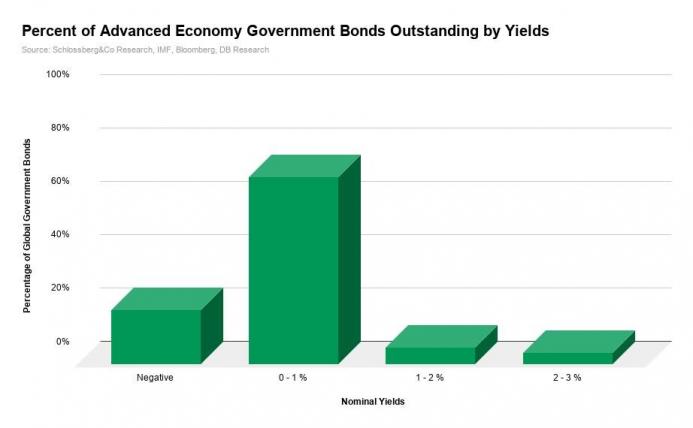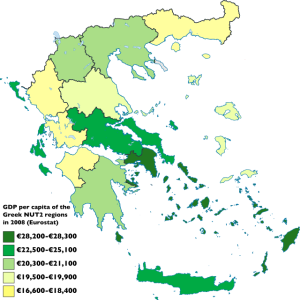By Dr Frank Shostak
By popular thinking the economy is perceived to be like a space ship, which occasionally slips from the path of stable economic growth and stable prices.
Following this way of thinking when economic activity slows down and falls below the path of stable economic growth and prices, it should be the duty of the central bank to give the economy a push, which will place it back onto the stable growth path.
The push is done by means of an expansive monetary policy i.e. the lowering of the interest rates and by raising the growth rate of money supply. Conversely, when economic activity is perceived to be “too strong”, then in order to prevent “overheating” it should be the duty of the central bank to “cool off” the economy by introducing a tighter monetary stance.
This amounts to raising interest rates and slowing down monetary injections. It is believed that a tighter stance is going to place the economy onto a trajectory of stable economic growth and stable prices.
Note that in this sense, it would appear that a tighter monetary stance could counterbalance the effects of the previous expansionary monetary stance.
Why a tight monetary stance cannot undo the effects of an easy stance?
We suggest that a tight monetary stance cannot undo the effects of the previous easy stance. The misallocation of resources due to an expansionary monetary policy cannot be reversed by a tighter stance. According to Percy L. Greaves, Jr. in “The Causes of the Economic Crisis and other essays before the Great Depression” – Mises Institute- Books/ Digital text
Mises also refers to the fact that deflation can never repair the damage of a priori inflation. In his seminar, he often likened such a process to an auto driver who had run over a person and then tried to remedy the situation by backing over the victim in reverse. Inflation so scrambles the changes in wealth and income that it becomes impossible to undo the effects. Then too, deflationary manipulations of the quantity of money are just as destructive of market processes, guided by unhampered market prices, wage rates and interest rates, as are such inflationary manipulations of the quantity of money.
We are of the view that by freeing the economy from central bank interference with interest rates and money supply, the process of wealth destruction is likely to be arrested. This we suggest is going to strengthen the process of wealth generation. With a greater pool of wealth, it is going to be much easier to absorb various misallocated resources.
We suggest that the Fed’s tampering with market signals undermines the process of wealth generation thereby exerting an upward pressure on individuals’ time preferences and thus pushing the market interest rate in an upward direction.
Can central bank policies keep the economy on stable growth path?
Most experts are of the view that a major obstacle for the attainment of a stable economic growth rate and a stable prices growth path are the deviations of the federal funds rate from the neutral interest rate.
The neutral interest rate, it is held, is the one that is consistent with stable prices and a balanced economy. What is required then is for Fed policy makers to successfully target the federal funds rate towards this neutral interest rate, so it is held. Again, according to this view, the main source of economic instability is the variability in the gap between the neutral interest rate and the federal funds rate.
Note that in this framework of thinking the neutral interest rate is established at the intersection of the aggregate supply and aggregate demand curves. According to this way of thinking if the market interest rate falls below the neutral interest rate, investment is going to exceed savings implying that the quantity demanded will exceed the quantity supplied. Assuming that the excess demand is financed by the expansion in bank loans this leads to the generation of new money, which in turn pushes the general level of prices up.
Conversely, if the market interest rate rises above the neutral interest rate, saving will exceed investment, aggregate supply will exceed the aggregate demand, bank loans and the stock of money will contract, and prices will fall.
Hence, whenever the market interest rate is in line with the neutral interest rate, the economy is in a state of equilibrium and there is neither upward nor downward pressures on the price level.
The main problem with all this is that the neutral interest rate cannot be observed. How can one tell whether the market interest rate is above or below the neutral interest rate?
Despite the fact that the neutral interest rate cannot be observed economists are of the view that it could be estimated by various indirect means. In order to ascertain the unobservable neutral interest rate economists now employ various sophisticated mathematical methods. However, does all of this make much sense?
Note again that in the process of attempting to establish the stable growth path, economists assume the existence the aggregate supply and aggregate demand curves. The intersection of these curves generates the so-called equilibrium that supposedly corresponds to the neutral interest rate and thus to the growth rate of economic stability.
Now, supply and demand curves as presented by popular economics does not originate from the facts of reality but rather from the imaginary constructs of economists. None of the figures that underpin the supply and demand curves originate from the real world – they are purely imaginary.
According to Mises,
It is important to realize that we do not have any knowledge or experience concerning the shape of such curves.
Yet, economists heatedly debate the various properties of these unseen curves and their implications regarding government and central bank policies.
Why general equilibrium is a fiction
We suggest that the existence of a general equilibrium as depicted by the intersection between the overall economy supply curve with the overall economy demand curve is questionable. The economy as such does not exist apart from individuals. Hence, something that does not exist cannot strive to some kind of general equilibrium. The concept of equilibrium is only relevant to individuals.
Equilibrium in the context of an individuals’ conscious and purposeful behavior has nothing to do with the imaginary equilibrium as depicted by popular economics. Equilibrium is established when individuals’ ends are met.
When a supplier is successful in selling his supply at a price that yields profit, he is said to have reached an equilibrium. Similarly, consumers who bought this supply have done so in order to meet their goals. Again, every individual in his own context achieves his equilibrium whenever he reaches his goal.
Observe that in the absence of central bank interference, the market interest rate that will be established is going to be in line with individuals’ goals. This interest rate will reflect individuals’ goals and not the wishes of central bank planners.
Thus, some individuals might discover that the interest rate that they would have to pay is much lower than what they are ready to pay. For some other individuals, the free-market interest rate may turn out to be far too high. Consequently, they are going to be out of the market.
Now, once policies are implemented to achieve the neutral interest rate, which supposedly reflects the so-called general equilibrium as established by the mathematical models, this is likely to be in contradiction of what the free market would have established.
As a result, this is going to generate the misallocation of resources and the weakening of the process of wealth generation i.e. economic impoverishment. (Note that by setting the federal funds target rate, Federal Reserve policy makers are pretending that they have the numerical information of the interest rate that corresponds to the growth path of stable economic growth and stable prices).
The failure of various centrally planned economies such as the former Soviet Union is a testimony that central authorities attempt to push the economy towards the growth trajectory as dictated by the government bureaucrats’ results in an economic disaster.
Conclusion
We hold that the view that the economy can be regarded as a space ship is erroneous, since the economy is about acting human beings that interact with each other. Individuals are consciously engaged in the pursuance of their various goals by employing various means.
Contrary to the popular way of thinking, the damage caused by inflationary policy of the central bank cannot be neutralized by a deflationary policy. The deflationary policy is a policy of intervention and in this sense; it sets in motion a different form of the misallocation of resources.



